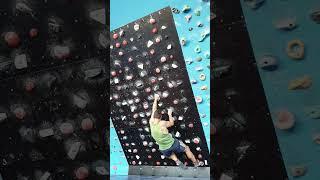Комментарии:

Thank you! Hope this is of many more to come!
Ответить
Really informational! Keep doing what you do, can't wait to see this channel grow! 🙂
Ответить
Keep it up, Paul. Thanks for this content.
Ответить
Nice work!
Ответить
thank for share this explanation..! I must confess that I was looking for some information about drums and cymbals. As cymbal physics is not a well detailed issue your video really helped me to understand how this beautiful instrument works.
Ответить
Thank you for explaining it so clearly!
Ответить
Sir tell, dome is long life than RCC OR RBC
Ответить
Amazing sir
Ответить
I really love the way you presented, Thank you sir
Ответить
Very much impressed by your explanation 🙂
Ответить
Great video!
Ответить
Love your explanations
Ответить
explanation is so clear
Ответить
Great video!
Could you elaborate on geodesic domes specifically?
And particularly to the effects of rearranging the struts in different angles (while preserving the strong triangles structure).
I'm considering building a geodesic dome for a home, and I wonder (in principle - of course I'll hire an architect for precise plans)
if it's possible and how to push some struts around to open a bit wider space that can accommodate better rectangular doors and windows.

a shell is a series of arch. So smart and cute explanation. Thank you, paul! You should consider to teach structure for future architects taking license exams.
Ответить
sir kindly make video on vaults also.
Ответить
I literally said "Yes" with you. Amazing work.
Ответить
Nice Sir
Ответить
Thank you for your insights into arches and domes. I am looking forward, during my retirement, to playing with these structures.
Ответить
Thank you sir!
Please never stop making videos...
You don't know how much impact this has on budding civil engineers!

رائع
Ответить
Would love a book written by you. You simplify things so well
Ответить
But what is the reason behind the choice? The dome seems so much more complicated than a standard roof line.
Ответить
Fantastic explanation. Domes do compressive and hoop forces together. So simple. Who knew?
Ответить
A question about the hoop forces - You mentioned that the bottom experience tension forces instead of compression ones.
But I wonder isn't that because we're used to imagine and build domes as hemi-spheres, which do not follow the catenary curve most optimal for arches?
Even if it's a concrete or stone dome (that hold very well to compression forces, but poorly to tension) the bottom of the dome wouldn't be stable, unless its walls are thick enough to ensure the catenary curve is within the walls.

I have seen the Pantheon many times and it has always left me in awe. Your explanation makes it even more impressive. Thank you.
Ответить
compare the forces of round domes to catenary domes. plz.
Ответить
Thank you too much
Ответить
I haven't found yet how the onion domes work, where the load excedes the bearing point, 🤔Why they don't collapse???😳😳😳😳😳
Ответить
Thanks you I have a question how Long Should You Wait to Remove Concrete domes Formwork ?
Ответить
I WISH TO BE LIKE U. SOME DAY.
Ответить
My guy, I don’t know what you do for a living, but your ability to teach what should be complex and boil it to down for even a moron like myself to understand is incredible!
Ответить
I am so glad I found this! I'm teaching arches and domes in the context of the Romans to sixth graders, and I think this will be a helpful visual. Thanks!
Ответить
I need to find people to help me build amphibious dome homes that can help us survive doomsday.
Ответить
Fascinating! Another great video! Thank you. 😊❤
Ответить
Hi, Paul! Great work, I've learned a lot! Arches, columns, beams, frames, cables/chains, domes... What about the best tunnel section ? You know, these days here in the S-W of Europe everyone is digging AA shelters...😆
Is it catenary best suited for the tunnel section shape ? What do you make of it ?

Thanks, and God bless you for this, very informative.
Ответить
If it’s clean like glass or plastic clean and you shine flashlight at it…you’ll see 2 lights inside the dome
Ответить
Human houses in the future are all dome-shaped 👍
Ответить
Thank you for this informative video Paul!!
Ответить
Love your channel. I hope one day I'll use information from you to build my own shed or house 😅
Ответить
Paul, What's the best shape to resist vacuum?
Also the dome?
I guess it's the same you are explaining in this video

Domes (cúpulas) are popular in Mexico. It is said they are natural air conditioners. Is this significantly true. These are not domed structures but structures with domes on top. Thanks.
Ответить
Awesome, thank you.
Ответить
Twister proof
Ответить
why the circle at the top allows the dome to be more efficient?
Ответить
Fantastic explanation!
Ответить





![How to get a Link to your Twitter Direct Messages! [ENGLISH] How to get a Link to your Twitter Direct Messages! [ENGLISH]](https://ruvideo.cc/img/upload/QVNaMVNzdmI4OWQ.jpg)




















